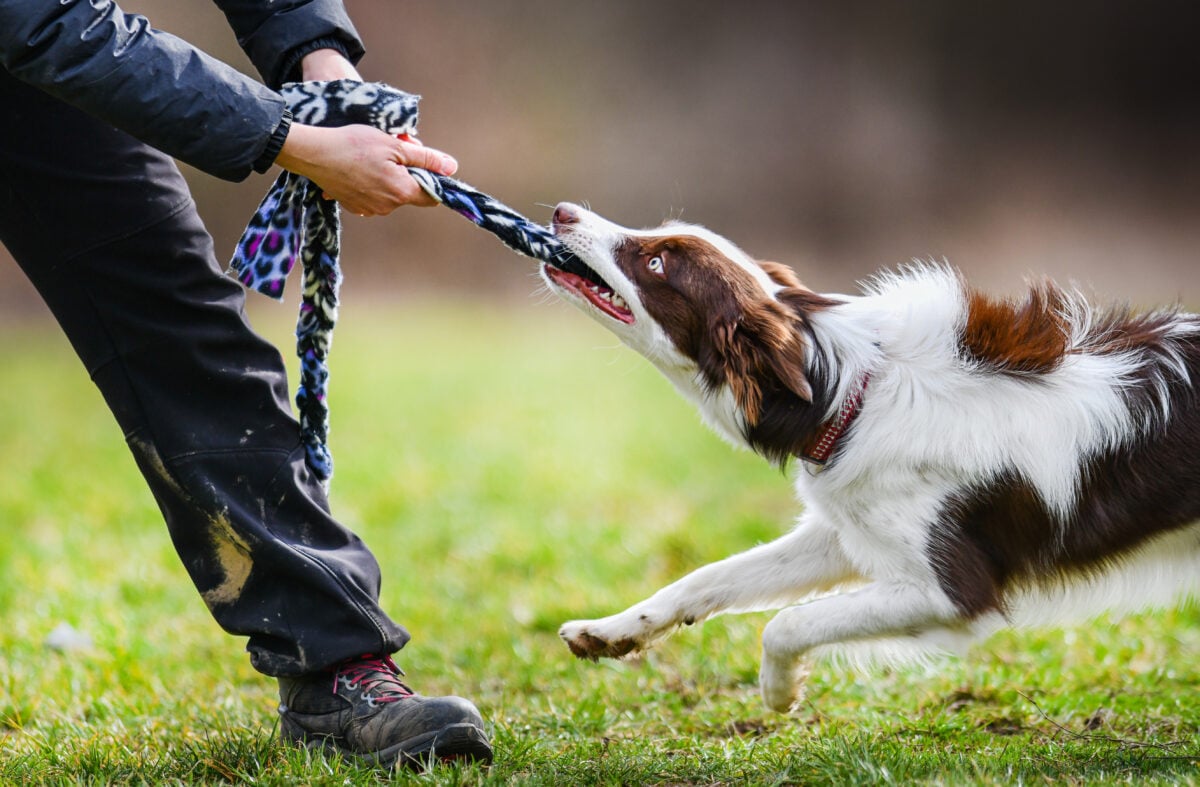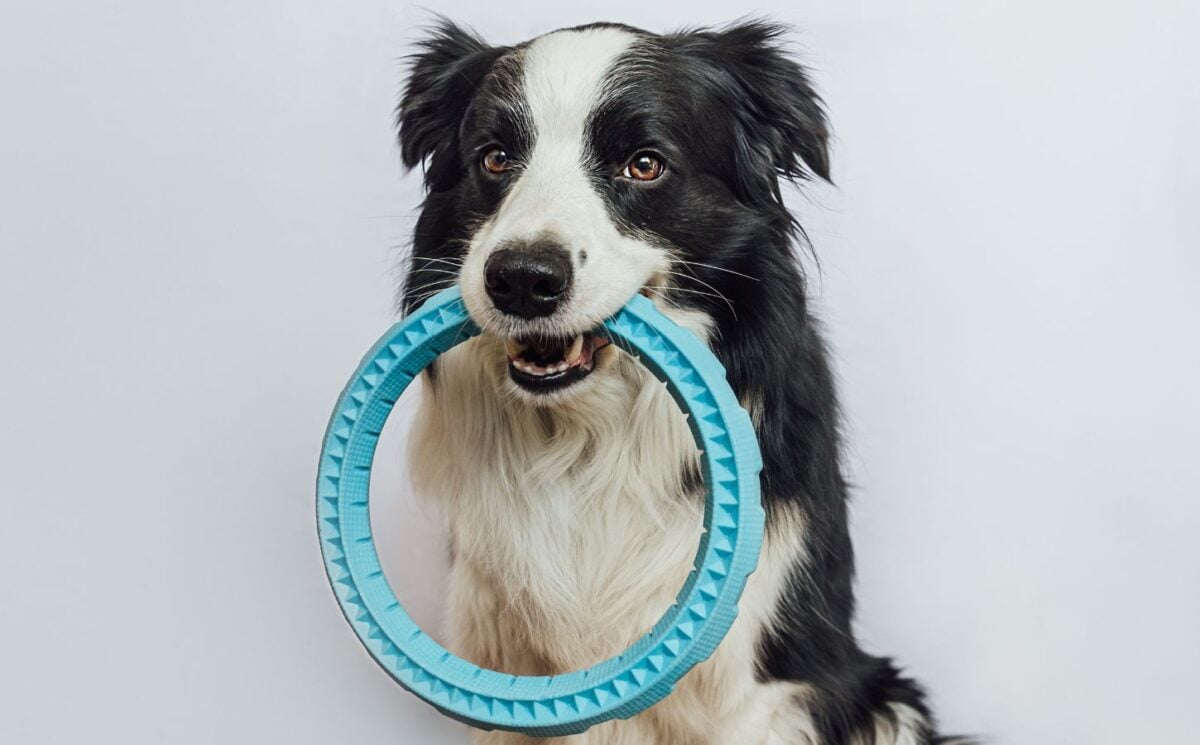According to a new study, some dogs can sort toys by function and extend those labels to categorize new objects.
The study found that certain dogs apply learned labels for familiar toys to new ones based on how they are used, not just how they look. For example, dogs were able to distinguish between pull toys vs fetch toys, even without any visual similarities.
Read more: California Officially Bans Cat Declawing Unless Medically Necessary
This cognitive leap is known as “label extension” in humans and is a cornerstone of early language development for toddlers. Until now, label extension has exclusively been documented in a limited number of non-human animals after extensive training.
In the study, which was published in October’s Current Biology, researchers noted that “gifted learner dogs” are able to rapidly learn verbal labels – in this case, the name of toys – through normal day-to-day interactions and play with their families.
The researchers observed seven gifted learner dogs, including six border collies and a blue heeler, during a four-stage experiment that concluded with a test. The dogs were tasked with selecting unlabeled toys based on the commands “pull” or “fetch” to describe their function, which they were mostly able to do.
The researchers also found that label extension occurred even without visual similarities. Overall, their report demonstrates vocabulary-based functional classification in a non-linguistic species, opening “exciting” new avenues for the study of language-related skills and how they develop in other animals.
“Our results show that these dogs do not just memorize object names,” said Claudia Fugazza, the study’s lead author, per EurekAlert! “They understand the meaning behind those labels well enough to apply them to new, very different-looking toys – by recognizing what the toys were for.”
Read more: Wild Fish Can Tell Humans Apart By Their Clothing, Study Finds
‘They are sending messages’

The new report adds to a growing body of research detailing dogs’ ability to process and interpret language. For example, dogs are known to display a left hemisphere bias for processing meaningful words and praise, and “neural mechanisms to separately analyze and integrate word meaning and intonation.”
A previous study found that dogs can recognize 2D rotated objects, while a report from last year found “neural evidence” for referential understanding of noun-like words. Their ability to interpret human language aside, dogs are complex, social animals in their own right, with specialized communication systems.
Arik Kershenbaum, the zoologist and author of 2024’s Why Animals Talk, has said, “We have to be careful not to think of animals having a language that we can translate. They are sending messages. But it’s not language. If we try to understand their communication as if it were human language, all we’re doing is imposing our own nature on them.”
Read more: Plants Make More Nectar When They ‘Hear’ Pollinators Buzzing, Say Scientists






